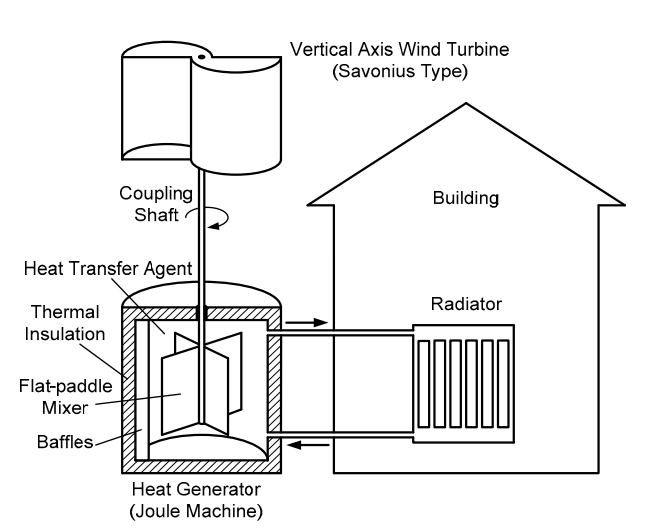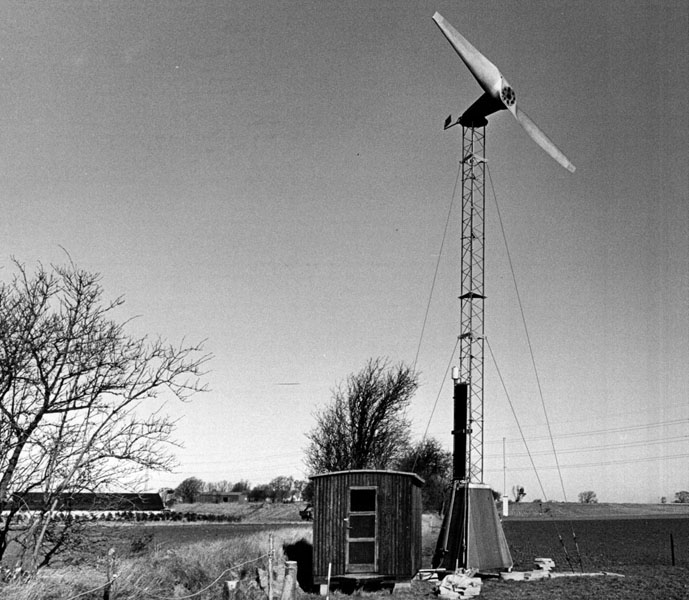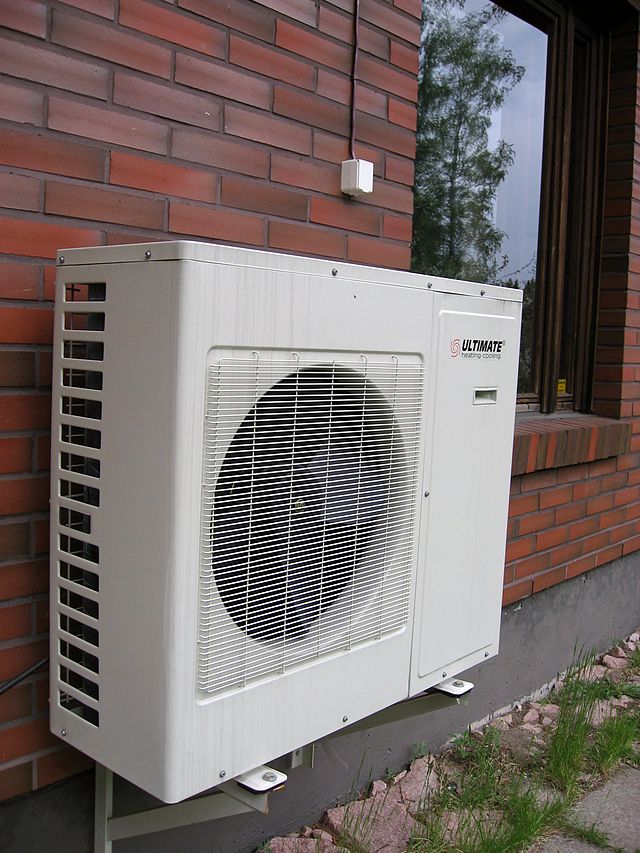Wind-to-Heat: A Lot of Hot Air? [Hackaday]

Heating is one of the greatest uses of energy in human society today. Where we once burned logs to stave off the brutal winter chill, now we lean on gas and electricity to warm our homes and keep us safe and toasty. In some colder climates, like the UK, heating can make up 60-80% of total domestic energy demands.
However, there are alternative ways to provide heating. Using wind energy to directly provide heat could be key in this area, using a variety of interesting methods that could have some unique niche applications.
Conversion
If one headline has become repetitive and boring over the last two years, it’s rising gas and electricity prices. That has left millions around the world paying more than ever to heat their homes. Sustainable sources of energy at the home scale can offset this to a degree, for those that rely on electric heating methods—whether through resisistive means or via heat pumps. Of course, in the coldest of winters, common home solar panels are sadly at their lowest output, providing weak savings at best.
These issues have shed new light on alternative methods of heating homes in a clean, renewable fashion. In particular, wind energy can be used for heating if properly employed. The most obvious solution is indirect, whereby a wind generator provides electricity to run conventional electric heating. However, more interesting are the direct methods, which can be cheaper and more energy efficient in some cases.
Slam On The Brakes!

The most intuitive type of wind-to-heat generation is via a fluid-brake system, also known as a Joule Machine. This involves a windmill turning a paddle inside a container of fluid, most typically water. The energy captured from the wind stream is essentially dissipated into the fluid by the resistance it poses to the windmill, heating it up. The heated fluid can then be pumped to radiators to deliver heating where it is needed. It’s a simple enough concept, though takes careful engineering to make it work in practice. The key is in properly sizing the windmill and fluid brake to match each other, and to choose the right parameters to heat the fluid to a useful degree. The benefit of this method is that the system converts directly from mechanical energy to heat, bypassing the electrical stage which adds significant expense and complexity. It also saves an extra energy conversion stage which can be beneficial for efficiency.
A fluid-brake windmill is a remarkably simple device, mechanically-speaking. It could have been used for heating in early Industrial times had someone thought up the idea back then. However, they first gained prominence as certain enterprising individuals in Denmark experimented with the technology in the 1970s. The country was wracked by the global oil crisis, as it depended on a reliable supply for heating. When oil prices skyrocketed, alternatives quickly became attractive.
It bears noting that this concept is mostly applicable for those in rural areas with space to spare. They’re also places where the wind is likely to be more available. Plus, unlike built-up areas, it’s easier to build a bigger turbine that is more capable. Small or low wind turbines typically perform poorly, particularly in crowded urban areas. However, for a rural property with ample space and limited connection to grid utilities, a wind-to-heat device could work well.

The early Danish design known as the Calorius Type 37 is a good example of a typical wind-to-heat setup. With a 5 m rotor and a 9 m height, it was capable of producing 3.5 kW of heat during a 11 m/s breeze. A pair of these unit would be capable of heating a medium-sized house.
In comparison, the more advanced LO-FA design from the 1980s demonstrated just how potent a wind-to-heat system could be. With a mighty 12-meter rotor on a 20 meter tower, it was capable of generating an estimated 90 kW of heat with wind blowing at 14 m/s. It notably used higher-resistance hydraulic oil for the fluid brake, rather than water in most other designs. The heat was then transferred to water for distribution. With so much heating capacity, the LO-FA could conceivably heat several homes, suggesting large wind-to-heat units could be ideal for off-grid communes or family farms.
Of course, the wind doesn’t blow all the time, so heat storage is often necessary if relying on such systems. The simplest way to do this is to combine a wind-to-heat system with a large tank of water to act as a heat storage reservoir. Dutch systems often relied on storage tanks with 10,000 to 20,000 liters of water on hand. This would provide enough storage to get through cold times with minimal wind with storage taking up roughly the same amount of space as a small swimming pool.
Mechanical Heat Pumps

Alternatively, heat pumps can be of great benefit in this area, too. A fluid brake system may convert somewhere up to 90% of the wind energy captured into heat in the fluid. A heat pump, on the other hand, can be 300% efficient or more. This is because rather than converting the wind energy directly into heat, the wind energy is instead moving heat from one place to another instead.
There’s nothing particularly fancy involved in building such a system. One can merely take an existing electrical heat pump, and remove the motor, replacing the mechanical drive with the output of a wind turbine. Some gearing may be required to match the two, but fundamentally, that’s all that is required. This is generally more efficient than using a wind turbine to generate electricity that then turns an electric motor to run the heat pump indirectly.
Wind-to-heat systems relying on heat pumps are even more niche than their fluid-brake cousins. However, early research suggests that they could be a remarkably cheap and efficient way of generating heat directly from wind energy. Practical concerns may limit them to use in off-grid communities or other niche applications, but nonetheless, the thermodynamics check out.
Where We Stand
Today, far removed from the oil crisis of the 1970s, direct wind-to-heat generation remains more of a research curiosity than a popular method of warming homes. However, if you’re a university researcher, or working on new concepts for your city’s district heating system, or a rural hacker out on a farm, it may bear examining. For areas with abundant wind availability and high heating demand, wind-to-heat systems could prove useful for keeping everyone toasty and warm in a zero-emissions fashion.

![wind-to-heat:-a-lot-of-hot-air?-[hackaday]](https://i0.wp.com/upmytech.com/wp-content/uploads/2023/06/130359-wind-to-heat-a-lot-of-hot-air-hackaday-scaled.jpg?resize=800%2C445&ssl=1)